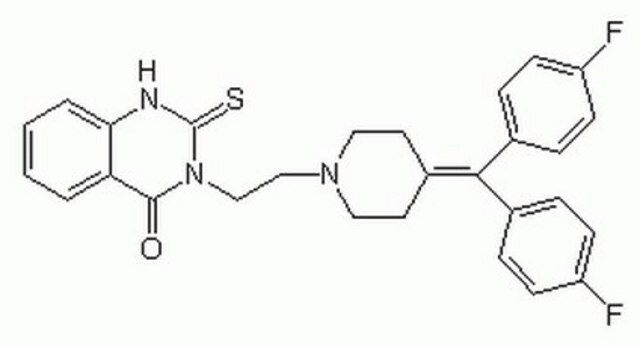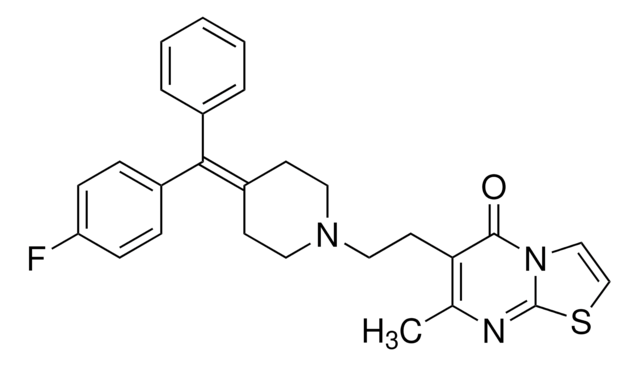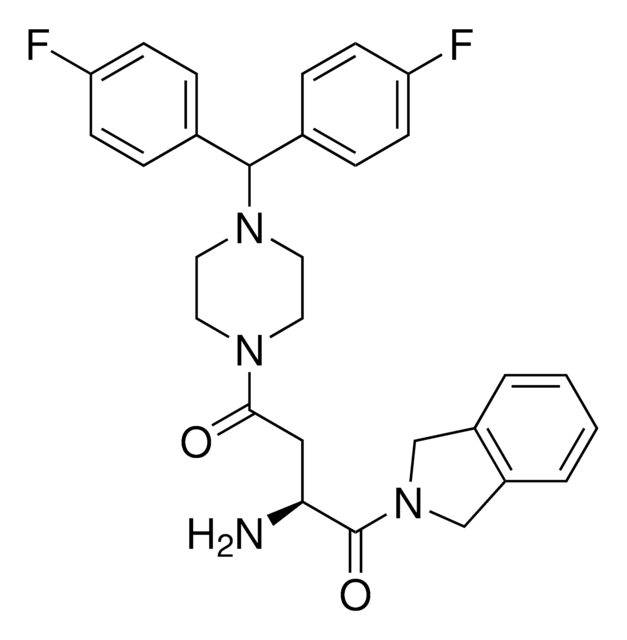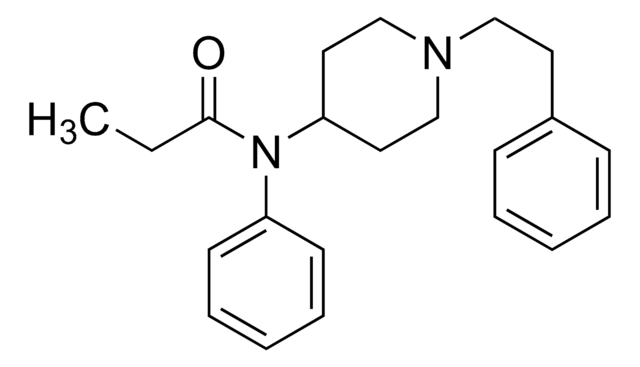D5794
Diacylglycerol Kinase Inhibitor II
solid
Synonym(e):
3-[2-[4-(bis(4-Fluorophenyl)methylene)-1-piperidinyl]ethyl]-2,3-dihydro-2-thioxo-4(1H)-quinazolinone, R59949
About This Item
Empfohlene Produkte
Biologische Quelle
synthetic (organic)
Assay
≥97% (HPLC)
Form
solid
Farbe
pale yellow
mp (Schmelzpunkt)
228-230 °C
Löslichkeit
0.1 M HCl: slightly soluble
0.1 M NaOH: slightly soluble
DMSO: soluble
H2O: insoluble
ethanol: soluble
ethyl acetate: soluble
Lagertemp.
−20°C
SMILES String
Fc1ccc(cc1)\C(=C2\CCN(CCN3C(=S)Nc4ccccc4C3=O)CC2)c5ccc(F)cc5
InChI
1S/C28H25F2N3OS/c29-22-9-5-19(6-10-22)26(20-7-11-23(30)12-8-20)21-13-15-32(16-14-21)17-18-33-27(34)24-3-1-2-4-25(24)31-28(33)35/h1-12H,13-18H2,(H,31,35)
InChIKey
ZCNBZFRECRPCKU-UHFFFAOYSA-N
Anwendung
Biochem./physiol. Wirkung
Leistungsmerkmale und Vorteile
Lagerklassenschlüssel
11 - Combustible Solids
WGK
WGK 3
Persönliche Schutzausrüstung
dust mask type N95 (US), Eyeshields, Gloves
Analysenzertifikate (COA)
Suchen Sie nach Analysenzertifikate (COA), indem Sie die Lot-/Chargennummer des Produkts eingeben. Lot- und Chargennummern sind auf dem Produktetikett hinter den Wörtern ‘Lot’ oder ‘Batch’ (Lot oder Charge) zu finden.
Besitzen Sie dieses Produkt bereits?
In der Dokumentenbibliothek finden Sie die Dokumentation zu den Produkten, die Sie kürzlich erworben haben.
Unser Team von Wissenschaftlern verfügt über Erfahrung in allen Forschungsbereichen einschließlich Life Science, Materialwissenschaften, chemischer Synthese, Chromatographie, Analytik und vielen mehr..
Setzen Sie sich mit dem technischen Dienst in Verbindung.







